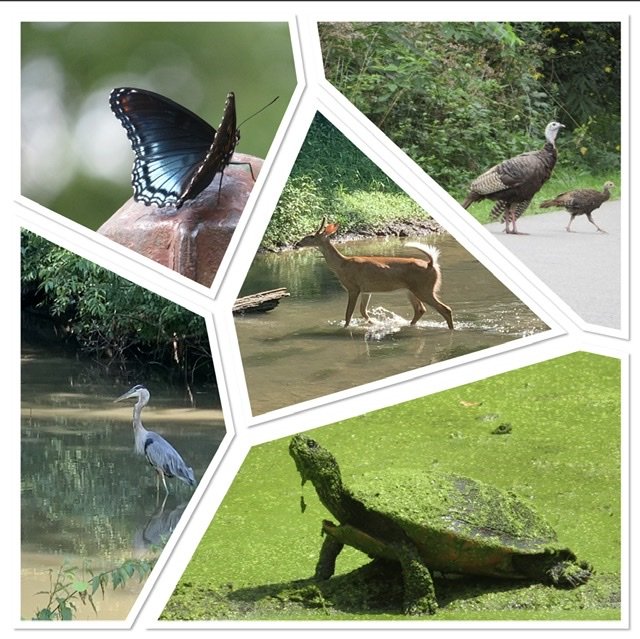Best of the Pittsburgh to DC Cycle Trek
/Now that we’ve had a few days to relax and think about our recent cycle trek, we’ve come up with some thoughts and highlights of our trip. We’ve broken them down into the two separate sections that we rode: the Great Allegheny Passage (GAP) and the Chesapeake and Ohio Canal Towpath (C&O). I’ve also included some stats at the end.
The Best of the GAP
1. Beginning any new adventure is exciting. Riding to Pittsburgh on our first day was all anticipation and pent up energy. We’d read all about it and checked out the trail maps, but it’s never real until you get there and start riding. Point State Park at the confluence of the Ohio, Monongahela, and Allegheny Rivers is the western terminus of the GAP and it’s marked by a bronze medallion in the pavement. Seeing and photographing the medallion made it all real.
2. The trail itself was wonderful, like riding on a highway. Its crushed limestone surface was easy riding. Maintenance of the trail, all by volunteers, was outstanding. Amenities along the trail were awesome. There were visitor centers, kiosks and rest areas galore, all staffed and ready with help, information and well wishes. Hotels and motels were accommodating; restaurants offered specials for cyclists. Locals went out of their way to put out cold water, chairs and snacks for passing hikers and bikers. People waved as we passed. Cars stopped and gave us the right-of-way.
3. Crossing the Continental Divide seemed like a major accomplishment. We’d been cycling an uphill grade, albeit a slight one, since we’d left Pittsburgh and riding through the tunnel underpass marked Eastern Continental Divide was worth celebrating. The rest of the ride was all downhill. Well, not really, but in our minds it was a milestone that signified we were nearing the end of the trail and would soon achieve our goal.
4. Arrival at Cumberland and seeing the Mile Marker 0 meant we’d ridden the 150 miles from Pittsburgh. We were tired, but ecstatic. We were anxious to get back to Blanche and energized to begin another journey from Cumberland to D.C. on the C&O Canal Towpath.
5. Leaving Blanche at the Amtrak Station in Connellsville was a little discomfiting. We worried she’d be okay though we took precautions and we also hoped our plans for accommodations and meals along the way as well as our return trip plans would pan out. Boarding the train in Cumberland then getting off the train back in Connellsville and seeing Blanche waiting for us just as we left her was a relief. It was also my first time riding the Amtrak which I thought was pretty cool.
GAP stats:
Length of the GAP: 150 miles
Total miles cycled: 238
Average speed: 12.1 mph
Average miles/day: 29.8
Total days: 8
The Best of the C&O Canal Towpath
1. Probably the most striking thing about the towpath was the history associated with it. You can feel it while you’re riding. Even before areas along the canal became Civil War battlefields, the digging of the canal itself entailed thousands of workers. It was such a tremendous feat. Hand-dug by immigrant laborers over a 22 year span, we marveled as we rode to think that the ‘ditch’ we were riding along had been dug, shovelful by shovelful, by men who toiled six days a week, 10-12 hours a day, year after year. The architectural and engineering accomplishments of the Paw Paw tunnel and the aqueducts were amazing even by today’s standards considering the tools with which they had to work.
2. The wildlife along the canal was outstanding. Herons, ducks, geese, songbirds, turtles, deer, wild turkeys, squirrels, chipmunks, rabbits, groundhogs, butterflies, dragonflies, snakes, we saw them all. Wildflowers bloomed; trees provided lovely shade. All in all, it was grand.
3. The Towpath is vastly different from the GAP. Where the GAP is groomed and maintained exclusively by volunteers, the C&O is under the auspices of the NPS (National Park Service). The GAP is mostly crushed limestone or paved… easy riding for the most part… very civilized. The C&O is mostly packed dirt, cart roads and/or gravel. It’s wild and maintains its allure as an historical towpath, not just a bike or hiking trail. As such, the C&O was definitely more challenging with its narrow trails, mud, uneven surfaces, detours, and downed trees and hence, more memorable.
4. Riding the GART (Great American Rail-Trail) from Washington, D.C. to Washington State is an ongoing goal for us so knocking off another 334 miles with the completion of the C&O was very satisfying.
5. Arriving at the National Mall in Washington, D.C. was awesome. Though the final couple of miles are not part of the C&O Canal, we considered it an achievement to ride from Cumberland to the Mall and it is the beginning or eastern terminus of the GART. Standing in front of the Lincoln Memorial, gazing at the Washington Monument with the Capitol Building in the far distance is always a wonderful feeling. We’ve visited D.C. several times in the past and always love it. This time was no exception.
C&O Canal Towpath stats:
Length of the C&O: 184.5
Total miles cycled: 374
Average speed: 11.5 mph
Average miles/day: 28.8
Total days: 13
Total miles cycled both trails: 612 over 21 days
So… what’s next? Stick around… we’ve got a few surprises for you.










